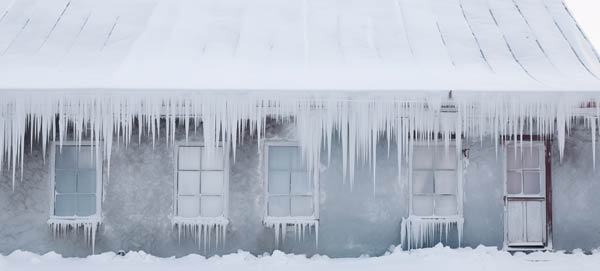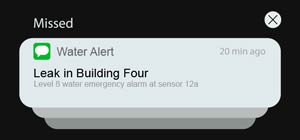
Winter Safety That Doubles as a Risk Management Grant Winner
The stresses and demands of winter are ongoing challenges for park districts, and often include everything from deep freezes and unoccupied facilities to slippery surfaces and snow removal.
Sometimes, creative solutions to those challenges end up being great Risk Management Grant applications — and even winners! Zion Park District combatted deep freeze issues in buildings by using temperature sensors. And here are the details on how the agency benefitted from the solution and decided to submit the idea for a 2024 grant application.
Zion Park District’s Temperature Sensors
 According to Chad Murphey, Chief of Rangers at the agency, “The initial reason for installing the sensors was to find HVAC failures before serious damage could occur, like burst pipes — because we had a boiler stop working in a building that isn’t occupied very often during the winter months. Luckily, we found out about it before any damage occurred.” The agency decided not to run that risk again and to stay ahead of any possible issues by installing sensors in 10 buildings across its facilities. According to Chad Murphey, Chief of Rangers at the agency, “The initial reason for installing the sensors was to find HVAC failures before serious damage could occur, like burst pipes — because we had a boiler stop working in a building that isn’t occupied very often during the winter months. Luckily, we found out about it before any damage occurred.” The agency decided not to run that risk again and to stay ahead of any possible issues by installing sensors in 10 buildings across its facilities.
How They Work
The sensors connect to the agency’s alarm systems, Murphey explains. “We had to update all the alarm panels and add alarm systems to four buildings that didn’t have them before. We placed the physical sensors where we would see the temperature changes soonest and with the least chance of generating false alarms.”
The sensors work 24/7/365 to measure the temperature, with high and low settings in place in each location to warn when the temperature rises or falls out of those safe zones. They also all have backup batteries in case of a power failure. “If we lose power, the sensors alert the alarm company which then calls us, so we can take care of the issue,” Murphey says.
 The alarm sends a push notification via a mobile app to park district staff. “The push notification automatically comes to me along with a second signal sent to the on-duty park ranger duty cell phone that the on-duty park ranger must carry,” Murphey adds. It also signals the alarm company, which then calls the agency. The alarm sends a push notification via a mobile app to park district staff. “The push notification automatically comes to me along with a second signal sent to the on-duty park ranger duty cell phone that the on-duty park ranger must carry,” Murphey adds. It also signals the alarm company, which then calls the agency.
Although the initial reason for the installation was to find HVAC failures before serious damage could occur, Murphey says the park rangers check the app to make sure there are no issues before leaving for the night. “By constantly checking on them, we greatly reduce the chance of a failure causing damage or requiring us to file a claim with PDRMA,” he points out.
Murphey advises other agencies considering temperature sensors to do their homework. “Talk to as many businesses as possible that provide alarm, access control and other monitoring services. We received quotes that varied greatly in price in addition to how well they worked and what their notification procedures are.”
PDRMA RESOURCES
If you have new staff this winter or the same old crew, introducing and/or reviewing these resources can help your facilities, staff and patrons enjoy this winter season safely!
|